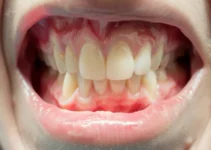Surgery for snoring is often considered when other treatments have failed to alleviate the condition. This medical intervention specifically targets structural issues in the airways that contribute to snoring and sleep apnea. By removing or tightening tissues, or by correcting anatomical abnormalities, surgery can significantly reduce or even eliminate snoring. It’s essential for patients to undergo a thorough evaluation to determine the underlying causes of their snoring and to discuss all available surgical and non-surgical options with a healthcare provider to ensure the best possible treatment outcomes.
Understanding the Causes of Snoring
Snoring is a widespread issue that affects millions of people around the world. It can disrupt sleep patterns and lead to serious health issues if left untreated. Understanding the underlying causes of snoring can help in finding effective solutions. Generally, snoring occurs due to the vibration of relaxed muscles in the throat and mouth during sleep. However, there are several factors that can contribute to this condition.
In this article, we will delve into three primary causes of snoring: obstruction of the airway, lifestyle factors, and anatomical issues. By examining these causes, you will gain a better understanding of why you or your loved ones might be snoring and what steps can be taken to address it.
Obstruction of the Airway
One of the main causes of snoring is the obstruction of the airway. This can happen for several reasons, such as nasal congestion, swollen tonsils, or a deviated septum. When the airway is obstructed, airflow becomes turbulent and leads to the vibration of soft tissues, producing the sound of snoring.
Chronic nasal congestion, often due to allergies or sinus infections, can significantly contribute to airway obstruction. In such cases, managing the underlying condition can help reduce snoring. Similarly, swollen tonsils and adenoids, especially in children, can block the airway and cause snoring. Surgical removal may be required in severe cases.
A deviated septum, which is a displacement of the wall between the nostrils, can also lead to snoring. This structural issue can impede airflow through the nasal passages. In some cases, surgical correction, known as septoplasty, may be necessary to alleviate the problem.
Lifestyle Factors
Lifestyle choices can also play a significant role in the onset of snoring. Obesity is one of the most common factors, as excess fat around the neck can put pressure on the airway, making it more likely to collapse during sleep. Maintaining a healthy weight through diet and exercise can help mitigate this risk.
Another lifestyle factor is the consumption of alcohol, especially close to bedtime. Alcohol relaxes the muscles in the throat, increasing the likelihood of snoring. Reducing alcohol intake or avoiding it before sleep can make a noticeable difference. Smoking is another lifestyle choice that can exacerbate snoring. The smoke irritates the lining of the nasal cavity and throat, leading to swelling and inflammation. Quitting smoking not only benefits overall health but also reduces the likelihood of snoring.
Poor sleep posture, such as sleeping on your back, can cause the tongue and soft palate to collapse to the back of the throat, partially obstructing the airway. Adjusting sleep position, such as sleeping on your side, can help alleviate this issue.
Anatomical Issues
In addition to lifestyle factors and airway obstructions, certain anatomical characteristics can predispose someone to snoring. For instance, a naturally narrow airway or enlarged tonsils and adenoids can make it more difficult for air to flow smoothly, resulting in snoring.
The shape and size of the soft palate and uvula can also impact snoring. A long soft palate or an enlarged uvula can narrow the airway and hinder airflow, causing turbulence that leads to snoring. In some cases, surgical interventions like uvulopalatopharyngoplasty (UPPP) may be recommended to reshape these structures.
Other anatomical issues include certain jaw abnormalities. For example, a lower jaw that is set back further than usual can cause the tongue to fall backward, partially obstructing the airway. Orthodontic treatments or oral appliances can help reposition the jaw and reduce snoring.
Moreover, genetic predispositions play a role. If snoring runs in your family, you might be more likely to experience it due to similar anatomical structures or inherited conditions that affect the airway. Understanding these genetic factors can help you take proactive measures to address the issue.
Understanding the causes of snoring is the first step towards finding an effective solution. By identifying whether snoring is due to airway obstructions, lifestyle factors, or anatomical issues, targeted treatments can be employed to reduce or eliminate the problem. For further insights and detailed analysis on related topics, explore our other articles.
Common Surgical Procedures for Snoring
Snoring is a prevalent condition that can significantly impact sleep quality for both the snorer and their bed partner. When conservative treatments like lifestyle changes and CPAP therapy fail to alleviate snoring, surgical interventions might be recommended. Understanding the variety of surgical options available is crucial for anyone considering surgery as a solution to snoring. In this article, we will explore some common surgical procedures used to treat snoring.
Among the most commonly performed surgical procedures for snoring are Uvulopalatopharyngoplasty (UPPP) and Radiofrequency Ablation (RFA). While both aim to reduce or eliminate snoring, they involve different techniques and principles. It’s essential to consult with a healthcare professional to determine which procedure might be the most appropriate for your specific condition.
Uvulopalatopharyngoplasty (UPPP)
Uvulopalatopharyngoplasty, commonly known as UPPP, is one of the most frequently performed surgical procedures for treating snoring. The primary goal of UPPP is to enlarge the airway by removing excess tissue from the throat. This includes the uvula, parts of the soft palate, and sometimes the tonsils. By making the airway larger, airflow becomes smoother, thereby reducing the vibrations that cause snoring.
Studies have shown that UPPP can be quite effective in reducing snoring; however, it’s not without risks. Potential side effects include difficulty swallowing, a sensation of a lump in the throat, and changes in voice. These side effects are typically temporary but can be long-lasting in some cases.
Patients considering UPPP should undergo a thorough evaluation, including a physical examination and possibly a sleep study, to determine the root cause of their snoring. UPPP is generally recommended for patients who have not found relief through less invasive treatments and who do not have conditions such as obstructive sleep apnea.
Radiofrequency Ablation (RFA)
Radiofrequency Ablation (RFA) is another surgical option for those suffering from chronic snoring. Unlike UPPP, RFA is a minimally invasive procedure that uses energy waves to shrink the tissues of the soft palate and uvula. The reduction in tissue size helps to open up the airways and minimize the vibrations that cause snoring.
RFA has gained popularity due to its minimally invasive nature and shorter recovery time compared to more extensive surgical options like UPPP. However, multiple sessions may be required to achieve optimal results. Patients generally experience less pain and fewer complications with RFA, making it an attractive option for many.
Clinical studies have demonstrated that RFA is effective in reducing the frequency and intensity of snoring. The procedure is usually performed under local anesthesia, and most patients can return to their regular activities within a few days. As with any surgical intervention, it is crucial to discuss the potential risks and benefits with your healthcare provider. When deciding between UPPP and RFA, it is essential to consider various factors, including the severity of the snoring, the patient’s overall health, and any underlying conditions. Consulting with an experienced healthcare provider will help determine the most suitable treatment plan for lasting relief from snoring.
If you’re interested in learning more about snoring treatments and other related topics, be sure to explore our other articles for comprehensive insights and expert advice.
Benefits and Risks of Snoring Surgery
Snoring surgery, also known as uvulopalatopharyngoplasty (UPPP) or other surgical procedures to reduce snoring, offers several benefits as well as potential risks. For many individuals who suffer from chronic snoring or obstructive sleep apnea (OSA), surgical intervention can be a life-changing solution. However, it is essential to weigh the advantages against the possible complications. In this section, we will explore the effectiveness of snoring surgery, its impact on sleep apnea, and the potential risks associated with these procedures.
Snoring surgery typically involves the removal or repositioning of tissues in the throat to widen the airway and reduce vibrations that cause snoring. This can lead to improved sleep quality and a reduction in daytime fatigue for both the patient and their sleep partner. However, as with any surgical procedure, there are inherent risks that must be considered before deciding to undergo treatment.
Effectiveness in Reducing Snoring
One of the primary goals of snoring surgery is to significantly reduce or eliminate snoring. Studies indicate that snoring surgery can be highly effective, with many patients experiencing a marked reduction in snoring intensity and frequency. The success rate varies depending on the specific procedure and the individual’s condition, but a large number of patients report positive outcomes.
The effectiveness of snoring surgery depends on several factors:
- The type of surgical procedure performed
- The patient’s anatomy and the severity of the snoring
- Post-surgical care and adherence to follow-up recommendations
In general, patients who undergo snoring surgery often report immediate improvements in their symptoms. However, it is crucial to have realistic expectations and understand that in some cases, snoring may persist or recur over time.
Improvement in Sleep Apnea
Snoring surgery is not only beneficial for reducing snoring but can also lead to significant improvements in obstructive sleep apnea (OSA). OSA is a serious condition characterized by repeated interruptions in breathing during sleep. By enlarging the airway and reducing obstructions, these surgical procedures can enhance airflow and reduce the number of apnea events.
Clinical studies have demonstrated that snoring surgery can:
- Decrease the Apnea-Hypopnea Index (AHI), which measures the severity of sleep apnea
- Improve oxygen saturation levels during sleep
- Enhance overall sleep quality and reduce daytime sleepiness
While snoring surgery can be effective in treating mild to moderate OSA, it may not be suitable for severe cases. Patients with severe OSA may require more comprehensive treatments, such as continuous positive airway pressure (CPAP) therapy or a combination of surgical and non-surgical interventions.
Potential Complications
Like any surgical procedure, snoring surgery carries potential complications and risks. Common side effects include pain, swelling, and discomfort in the throat area. These symptoms are usually temporary and can be managed with pain medication and proper aftercare.
More serious complications, although less common, can include:
- Infection at the surgical site
- Bleeding or hemorrhage
- Difficulty swallowing or changes in voice
- Sensation of a foreign body in the throat
- Failure to achieve the desired reduction in snoring or OSA symptoms
It is important for patients to discuss these potential risks with their healthcare provider and to have a thorough preoperative evaluation to determine if they are good candidates for snoring surgery. Proper postoperative care and follow-up appointments are crucial for minimizing risks and ensuring the best possible outcome.
Understanding both the benefits and risks of snoring surgery can help patients make informed decisions about their treatment options. If you are considering this surgery, it is essential to consult with a qualified otolaryngologist or sleep specialist to discuss whether it is the right choice for you. For more detailed information on related topics, explore our other articles on sleep disorders and treatments.
Frequently Asked Questions About Snoring Surgery
If you’re considering surgery to address your snoring and potentially alleviate sleep apnea, it’s natural to have questions. Here’s a common inquiry patients have:
What types of surgeries are available for treating snoring?
There are several surgical options to treat snoring, each targeting different anatomical causes of snoring. Some common procedures include Uvulopalatopharyngoplasty (UPPP), which removes excess tissue in the throat to widen the airway, and Lingual Tonsillectomy, which involves the removal of lingual tonsils if they are contributing to obstruction. Additionally, surgeries like Genioglossus Advancement or Hyoid Suspension can be performed to prevent the tongue from blocking the airway during sleep. Radiofrequency ablation is another less invasive option that reduces tissue in the soft palate and tongue. The choice of surgery will depend on the patient’s specific condition and needs, as diagnosed by a healthcare professional.

My name is Salman Kapa, a 73-year-old expert in bone regeneration and dental implantology. With decades of experience in the field, I am dedicated to advancing our understanding of oral health and hygiene. Through my research and writing, I aim to contribute to the development of innovative solutions in dental care.




